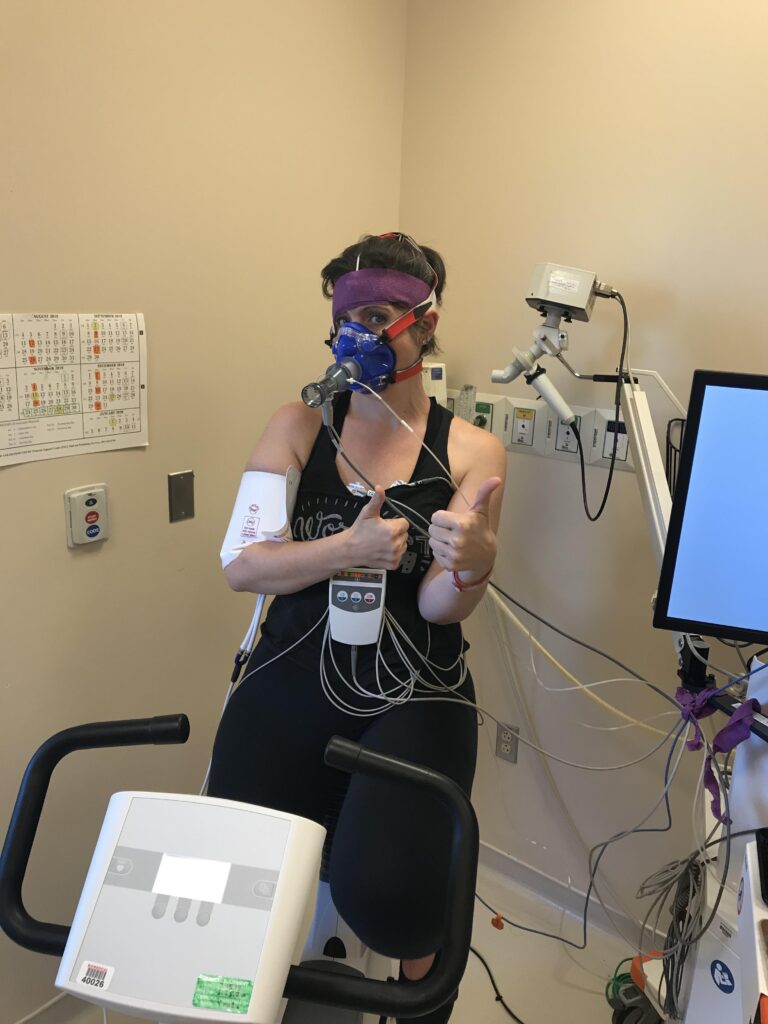How a LAM Patient Became a Scientist to Help Find a Cure

Beth Daugherity had been suffering lung and breathing issues for years. After a lung collapse and months of pain, she consulted several doctors to figure out what was wrong. They told her the symptoms were likely caused by her anxiety, weight, gallbladder — even the altitude. All the while, she was keeping close track of her lung problems, which always seemed to worsen with her menstrual cycle. Beth’s analytical mind told her this was no coincidence. Still, she had trouble convincing doctors she was onto something.
Then, in 2015, it all came crashing down.
That year, the 36-year-old’s lungs collapsed a total of nine times. Her extended family had to take care of her two young children while she shuffled in and out of hospitals. After multiple lung surgeries, she was diagnosed with LAM. Her prognosis was grim.
The devastating news left her feeling scared and out of control. A scientist by nature, Beth challenged herself to step away from her fear. She wanted to learn more — to do more — to understand LAM and help pave the way for new treatments.
 Immediately, Beth found a lifeline of knowledge and encouragement from The LAM Foundation. She enrolled in a PhD program to study, in part, the hormonal link to LAM, and why it almost exclusively affects women.
Immediately, Beth found a lifeline of knowledge and encouragement from The LAM Foundation. She enrolled in a PhD program to study, in part, the hormonal link to LAM, and why it almost exclusively affects women.
Eventually, Beth chose to have her ovaries removed. She has not had a lung collapse since then. “For me, that was an effective treatment, and my lung function has stabilized as well.” But Beth was lucky in that she had already had children. Unfortunately, many young LAM patients find themselves having to choose between having a family and being able to breathe.
She credits The LAM Foundation with expanding awareness of LAM among health care providers – a key to early diagnosis. “In the last decade, The LAM Foundation has focused on providing education and awareness to pulmonologists, emergency medicine, and OB-GYN physicians, Beth says. “I helped contribute the patient voice to this first line of education and believe it has been hugely impactful in improving diagnosis and access to care.”
Beth supports the LAM community in every way she can – through research, tissue donation, financial contributions, and fellowship with other women living with LAM. These women are the sisterhood, or family, that Beth never knew she was missing, but now couldn’t live without.
She and other LAM patients now believe their disease will one day be curable. She says, “I’m excited because I know that finding better treatments and eventually curing LAM is going to happen because of the energy, the information, and the research powered by The LAM Foundation.”
Focused and determined, Beth is giving her all to improving the lives of LAM patients. She is exactly where she wants to be – on the frontlines of research, with a unique patient perspective. “As a scientist, I look to our LAM patient network and rely on it to pick out common threads between patient experiences —this is what drives my research. What’s the next idea? What’s the next thing I want to research? What will be impactful? How do I do the most good with the time that I have left, however long that may be?”
She recalls the day she realized that participating in research was going to be a critical part of having a rare disease. From her hospital bed, she told her mother she actually felt gifted to have LAM. “I feel like I have a skillset and am gifted to be able to give back to this community.”
Gifted, and driven to make a difference in the fight against LAM.